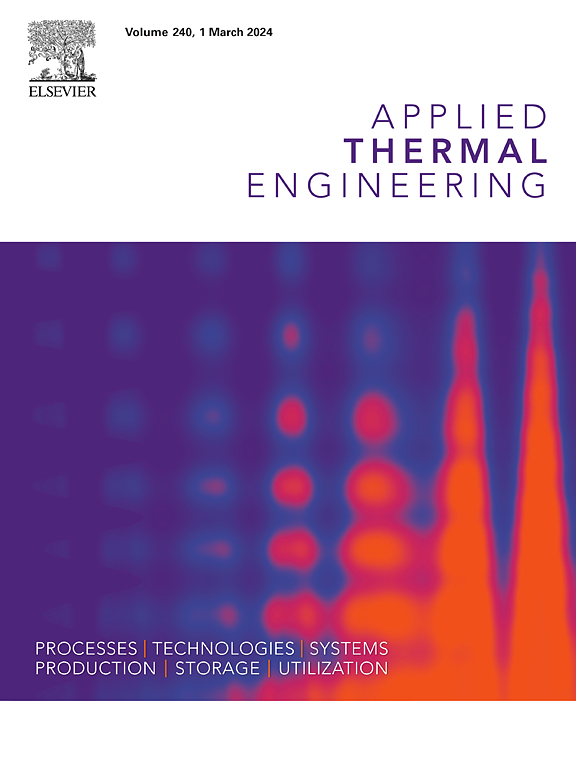富氧浓度对工业规模冶炼还原容器传热传质的影响
IF 6.9
2区 工程技术
Q2 ENERGY & FUELS
引用次数: 0
摘要
评估冶炼还原容器中氧富集的影响至关重要,因为提高传热传质效率对优化生产至关重要。采用拉格朗日和欧拉耦合方法建立了三维数学模型,模拟了矿粉还原反应、煤粉脱挥发反应、燃烧后反应等关键过程。预测结果与实际生产数据吻合较好,验证了模型的可靠性和预测准确性。考察了不同氧浓度(35%、50%、75%和100%)对烟气浓度、烟气温度、燃烧后比、生铁产出率和产煤率等关键参数的影响。与35%的氧气浓度相比,增加氧气浓度导致喷枪出口氧气体积增加了1.15、2.46和2.51倍。燃烧后比从0.576显著提高到0.596、0.636和0.674。在纯氧条件下,燃烧后芯温平均上升11.1%,达到2280.71 K,间接降低了0.33 t/t (0.33 t/tHM)的煤耗。氧气浓度的升高提高了传热传质,提高了生产效率。本文章由计算机程序翻译,如有差异,请以英文原文为准。
Effect of oxygen-enriched concentration on heat-mass transfer in an industrial-scale smelting reduction vessel
Assessing the impact of oxygen enrichment in the smelt reduction vessel is crucial, as improving heat and mass transfer efficiency is essential for optimizing production. A three-dimensional mathematical model employing a coupled Lagrangian and Eulerian approach has been developed to simulate key processes, including reduction reactions of ore powder, devolatilization of pulverized coal, post-combustion, and other reactions across three zones. The predicted results align closely with actual production data, confirming the model’s reliability and predictive accuracy. The effects of various oxygen concentrations (35 %, 50 %, 75 %, and 100 %) on critical parameters such as concentration of flue gas, temperature of flue gas, post-combustion ratio, production rate of pig iron, and coal rate were examined. Increasing the oxygen concentration led to an expansion of oxygen volume at the lance outlet by factors of 1.15, 2.46, and 2.51, compared to the baseline 35 % oxygen concentration. The post-combustion ratio notably increased from 0.576 to 0.596, 0.636, and 0.674, respectively. Under oxygen-only conditions, the average post-combustion core temperature rose by 11.1 %, reaching 2280.71 K, indirectly reducing coal consumption by 0.33 t per ton of hot metal (0.33 t/tHM). Elevated oxygen concentrations enhanced heat and mass transfer, as well as production metrics.
求助全文
通过发布文献求助,成功后即可免费获取论文全文。
去求助
来源期刊

Applied Thermal Engineering
工程技术-工程:机械
CiteScore
11.30
自引率
15.60%
发文量
1474
审稿时长
57 days
期刊介绍:
Applied Thermal Engineering disseminates novel research related to the design, development and demonstration of components, devices, equipment, technologies and systems involving thermal processes for the production, storage, utilization and conservation of energy, with a focus on engineering application.
The journal publishes high-quality and high-impact Original Research Articles, Review Articles, Short Communications and Letters to the Editor on cutting-edge innovations in research, and recent advances or issues of interest to the thermal engineering community.
 求助内容:
求助内容: 应助结果提醒方式:
应助结果提醒方式:


